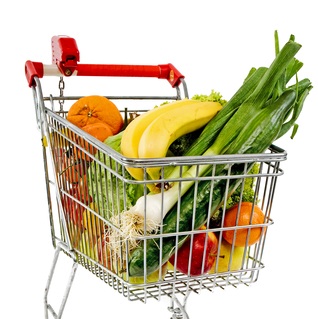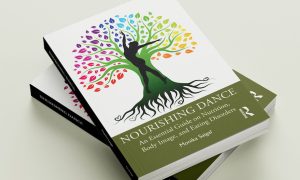By Emily C. Harrison MS, RD, LD
I don’t know any dancers who have money to throw away. Here are a few tips to help stretch those hard earned dollars.
Get your protein from more plant based sources
Protein from beans, peas, nuts, whole grains, seeds and soy is so much cheaper than animal based protein. Think about how much more a steak costs verses some beans and rice. If you buy the dried beans from bulk bins you will save even more. Black eyed peas and most beans are sources of protein, iron, potassium, folate and fiber. In general, plant based meals are lower in fat and calories but high in nutrients.
You can make totally organic (and delicious) homemade chili and rice and even add kale for about $2.00 per serving. It’s easy to throw everything in a slow cooker or make something ahead of time for an easy meal after a long day of rehearsals. Quinoa is a wonderful high protein grain that you can get for less than $0.50 per serving, and it cooks faster than rice for a quick week night meal.
Soy is a versatile and cheap source of protein. Add some tofu or edamames to a veggie stir fry. Eat more plants in place of meat and dairy – you’ll be fighting off cancer and reducing your impact on the environment while saving money!
Think critically about your grocery store
Food companies are businesses, and their ads are designed to get you to buy food and more of it. The system is designed for higher and higher profits, but that’s not always what’s best for our waist line, wallets, or our health. The word “natural” is now used on everything from chips to cookies and ice cream. “Natural” has no legal definition in the U.S. so it gets overused. It can lure people into believing that chips are somehow good for you just because the word natural is on the package.
Health claims are also a big part of the advertising market. Some companies will put random vitamins and “functional” ingredients into all kinds of foods and beverages touting health claims that might be flimsy at best or even dangerous. One example is mega doses of vitamins in beverages. No one needs 1000mg of vitamin B or C in a juice. The body wasn’t meant to absorb nutrients in this way and it can cause problems. Our bodies absorb nutrients best through real food. Stick to the outside aisles of a grocery store where you will find fewer boxes and bags and more fresh ingredients. We all like convenience, but we pay for it. Candy bars are right at eye level at the checkout counter and high fat foods are placed at high traffic areas for a reason. Bargains aren’t bargains if they are full of sugar, fat, or refined flour.
Is it really a bargain?
Buying in bulk might not always be a good thing. No one really needs a gallon container of cheese puffs. Big box retailers of wholesale food items might be selling you much bigger portions of unhealthy packaged foods. Is a 20 pack of croissants really a deal when each one packs up to 400 calories? Use care and read food labels if you shop at the big wholesale stores.
Some terms on packages are legally defined and can help when deciding what to buy. The term “organic” has strict guidelines in the US and while the system isn’t perfect, it is better to buy organic. But keep in mind that organic cookies are still cookies – enjoy them in moderation. It’s better to buy organic fruits and veggies, even though they usually cost more.
“Low fat” means that the food item must have 3 grams or less of fat per 100 grams, or no more than 30% of calories from fat. This can be helpful when looking at food labels. But one trick to be aware of is that “low-fat” baked goods often have way more sugar content than regular to make them taste better. So those low-fat treats might still have close to the same number of calories.
Prepare food at home and avoid packaged foods
Less packaging = Less cost. Planning ahead can save you lots of money. Having fruit and veggies ready to go at home make it easy to grab them while you are racing out the door to class. You are much more likely to eat well on a budget if you don’t have to pick something up from a convenience store or restaurant. Have grapes washed and ready to eat in your fridge, peel and cut carrots yourself and put them into your own reusable containers. Keep a box of 140 calorie granola bars in your car. When snacks are easy to grab, you are less likely to eat junk food which will cost you more money and many more calories.
Eat in season and reduce portions
Off season tomatoes shipped from miles away not only taste terrible, but are much more expensive. Shop local, support your farmers markets, and buy in season. You will get better quality food, with higher nutrients and your hard earned food dollars will stay in your local economy.
One of the main reasons for weight struggles are out of control portions. Make smaller portions and serve food on smaller plates. Restaurants are notorious for gigantic portions. A certain well known pizza chain’s “personal” pizzas can have upwards of 1000 calories for an individual serving. When eating out, split an entree with a friend. You’ll save money, and won’t overload calories. Ask if you can order a child’s portion. Chances are that it is actually a more reasonable portion size.
You CAN eat well on a tight budget: plan ahead, make your own food, shop local, and eat more plants.
Emily Harrison
 Emily Cook Harrison MS, RD, LD
Emily Cook Harrison MS, RD, LD
Emily is a registered dietitian and holds both a bachelor’s and master’s degree in nutrition from Georgia State University. Her master’s thesis research was on elite level ballet dancers and nutrition and she has experience providing nutrition services for weight management, sports nutrition, disordered eating, disease prevention, and food allergies. Emily was a professional dancer for eleven years with the Atlanta Ballet and several other companies. She is a dance educator and the mother of two young children. She now runs the Centre for Dance Nutrition and Healthy Lifestyles. She can be reached at emily@dancernutrition.com www.dancernutrition.com
Top photo: © Digitalpress | Dreamstime.com
















Pingback: Healthy Diet Habits for Teenage Dancers | Knowledge
Pingback: Healthy Diet Habits for Teenage Dancers | My Blog